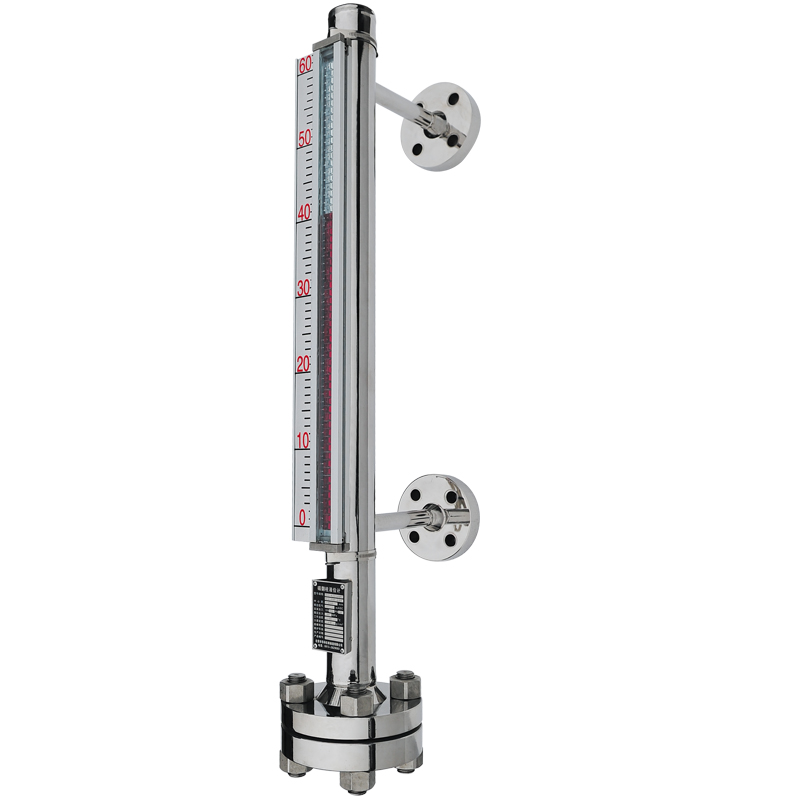How does the magnetic float level gauge work?Level gauges are an important part of most vehicles, especially when determining the fuel level of cars and airplanes. Although insufficient fuel can be inconvenient and costly when driving a car, it can have dire consequences on an airplane. In this article, we will study how these magnetic float level gauges work.Magnetic float level gauges (also called fuel gauges) enable drivers to monitor fuel consumption and help them determine when to refuel. They consist of two main components: the sensing system itself (also called the sender) and the indicator (also commonly called the meter).The working principle of the fuel gauge is to measure the voltage across the variable resistor in the sensing system to determine the amount of fuel; and then relay it to the driver through the indicating system. There are several components in the sensing system that are working so that it can detect how much fuel is in the tank, including float switches, variable resistors and wipers. Compared with other level gauges currently produced, the level gauge system is relatively simple, although newer level gauge systems can also use microprocessors for faster and more accurate measurements.The sensing system is located in the fuel tank and consists of a float (usually made of foam and connected to an actuated metal rod)Composition, the float is connected to a variable resistor. The variable resistor used in the fuel level gauge is usually composed of resistive material, one end is connected to the ground, and there is a wiper on it (very similar to a very small windshield wiper), when the float moves , The wiper moves on the resistive material. When the float moves due to changes in the fuel level, the tap moves on the resistance, causing voltage changes. The direction of the tap means that when the tank is empty, the resistance across the resistor is the highest. At this time, the tap should also be as far away as possible from the grounding end of the resistor. The change in current is then transmitted to the indicator, and the indicator changes its reading.However, the magnetic float level gauge in a car can often be inaccurate, especially when driving with a full tank. In this case, the float will rise to the top of the tank and the tap will return to the ground terminal of the resistor, resulting in a smaller resistance and a large current flowing through the level gauge. As the height of the float drops, the resistance changes. However, the meter will usually remain “full” for a period of time. This is because when the fuel tank is full, the float cannot position itself above the fuel because the fuel is blocked by the fuel tank or restricted by the joystick connected to it. This means that when the water tank is full, the float will be submerged. This can lead to inaccurate readings until the fuel drops to a level where the float can be placed on top, causing the resistance to change. Similarly, when the fuel is low, the rod usually does not extend to the end of the fuel tank, causing the gauge to indicate that the fuel tank is empty when there is actually some fuel remaining.Aircraft magnetic float level gaugeSome small aircraft’s magnetic float level gauges use the same sensing mechanism as cars. However, in large aircraft, many level gauges are used to cover the increased fuel tank size. For airplanes, the inaccuracies in certain automotive fuel level gauges must be avoided, because the stakes are much higher and fuel loss can have catastrophic consequences. In addition, the level gauges used on aircraft must be able to cope with changes in altitude. Therefore, they are more advanced than automotive magnetic float level gauges. Aircraft usually rely on ultrasonic or capacitive level gauges.The ultrasonic level gauge measures the height of the fuel in the fuel tank by sending out an ultrasonic signal, and the ultrasonic signal is measured on the other side of the fuel tank by another level gauge. On the other hand, when the capacitance level meter is used, the fuel will pass through the special ventilation holes when it is consumed, causing the capacitance in the level gauge to change, so that the fuel level in the fuel tank can be determined. This information is then passed to the pilot through the onboard computing system.
Similarly, when the fuel is low, the rod usually does not extend to the end of the fuel tank, causing the gauge to indicate that the fuel tank is empty when there is actually some fuel remaining.Aircraft magnetic float level gaugeSome small aircraft’s magnetic float level gauges use the same sensing mechanism as cars. However, in large aircraft, many level gauges are used to cover the increased fuel tank size. For airplanes, the inaccuracies in certain automotive fuel level gauges must be avoided, because the stakes are much higher and fuel loss can have catastrophic consequences. In addition, the level gauges used on aircraft must be able to cope with changes in altitude. Therefore, they are more advanced than automotive magnetic float level gauges. Aircraft usually rely on ultrasonic or capacitive level gauges.The ultrasonic level gauge measures the height of the fuel in the fuel tank by sending out an ultrasonic signal, and the ultrasonic signal is measured on the other side of the fuel tank by another level gauge. On the other hand, when the capacitance level meter is used, the fuel will pass through the special ventilation holes when it is consumed, causing the capacitance in the level gauge to change, so that the fuel level in the fuel tank can be determined. This information is then passed to the pilot through the onboard computing system.
Post time: 21-09-21
